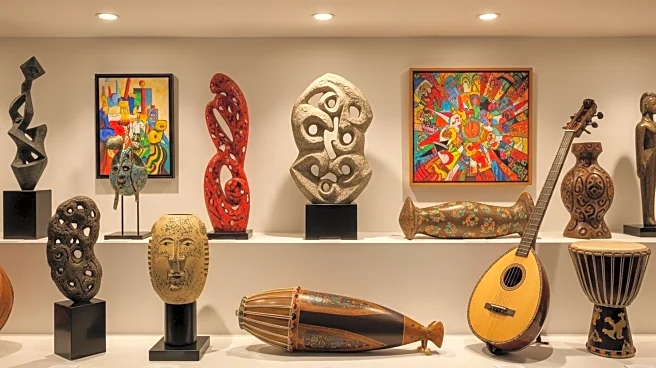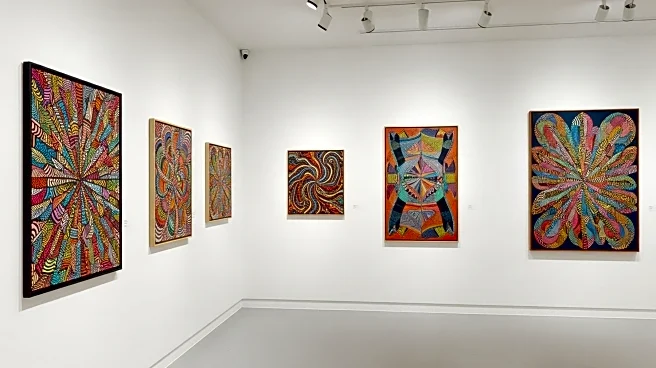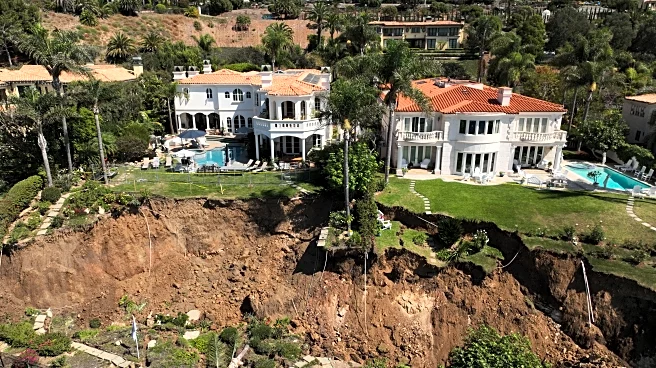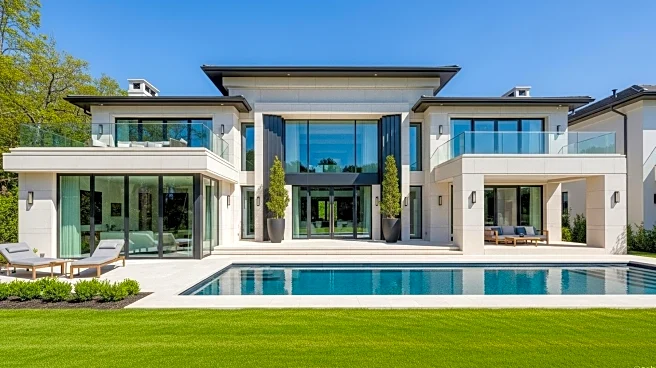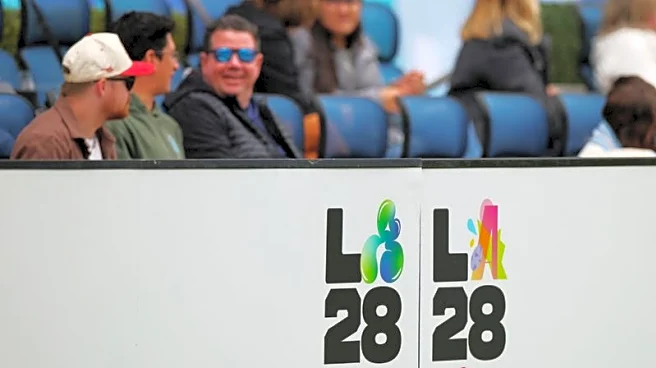What's Happening?
A new luxury housing and hotel complex in Beverly Hills, known as One Beverly Hills, is set to feature a floating public garden. The development, led by London-based Cain, includes two of the tallest towers in Beverly Hills, with the understanding that the high-rise design would allow for 8.5 acres of gardens on the 17.5-acre site. The gardens, designed by Los Angeles architecture firm Rios, will reflect the diverse landscape of Southern California, featuring drought-resistant native plants fed by recycled water. The complex, slated to open before the 2028 Olympics in Los Angeles, will also house luxury condos and hotel suites, including the Aman Beverly Hills hotel.
Why It's Important?
The development of One Beverly Hills represents a significant investment in urban green spaces, offering public access to botanical gardens in a luxury setting. This initiative highlights the growing trend of integrating environmental sustainability into urban planning, particularly in affluent areas. The gardens will serve as a community resource, promoting biodiversity and ecological awareness. Additionally, the project underscores Beverly Hills' reputation for luxury and exclusivity, potentially attracting high-profile visitors and residents, which could have economic implications for local businesses and tourism.
What's Next?
The One Beverly Hills complex is expected to open before the 2028 Olympics, providing a timeline for completion and public access to the gardens. As the project progresses, stakeholders, including city officials and environmental groups, may monitor its impact on local ecosystems and community engagement. The integration of recycled water systems and native plant species could serve as a model for future urban developments, encouraging sustainable practices in real estate projects.
Beyond the Headlines
The design challenge of creating a natural-feeling garden atop an underground garage highlights the innovative approaches required in urban landscaping. This project may influence future developments in urban areas, where space constraints necessitate creative solutions for green spaces. The emphasis on public access within a luxury complex also raises questions about inclusivity and the role of private developments in serving broader community needs.

